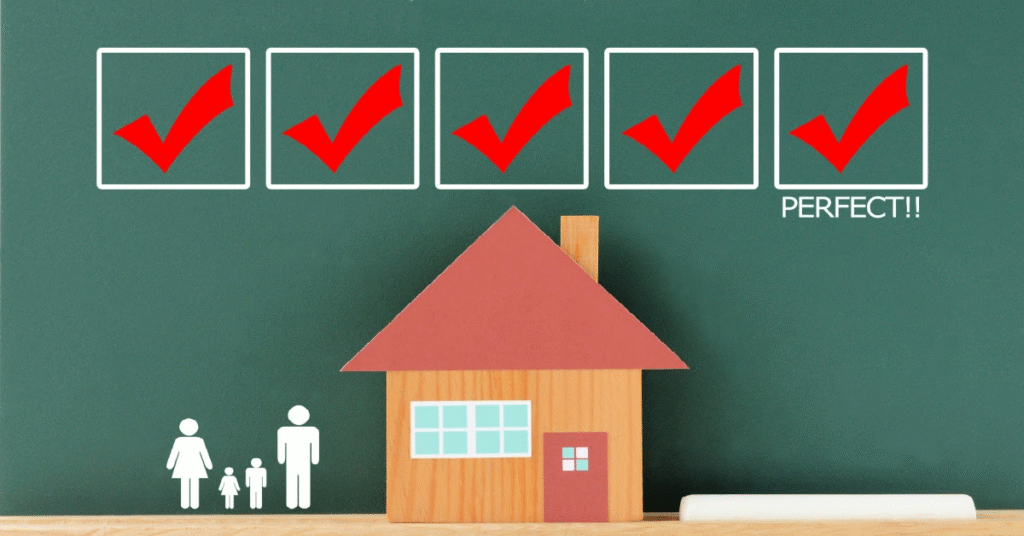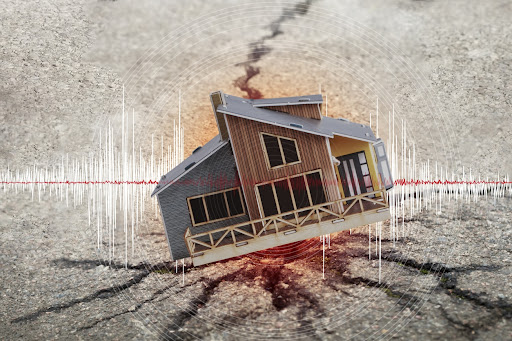Home insurance is a financial safety net that protects homeowners from potential loss or damage to their property. Yet, many homeowners don’t realize they could be overpaying for their coverage. With rates fluctuating due to market dynamics, policy changes, and regional risks, staying informed is key to ensuring you’re not spending more than necessary. In this comprehensive guide, we explore whether you’re paying too much for your home insurance, how rates are determined, and what you can do to secure better deals.
Key Takeaways
- Home insurance rates are influenced by location, home value, materials, security, credit score, and claims history.
- You might be overpaying if you haven’t compared rates recently, lack discounts, or have outdated coverage.
- Practical ways to lower premiums include increasing deductibles, bundling policies, and improving home security.
- Annual reviews and understanding your policy type ensure you’re only paying for what you need.
- Smart insurance management can save you hundreds or even thousands over time.
Understanding Home Insurance Rates
Home insurance rates are determined by a variety of factors. Understanding what goes into calculating your premium can help you identify areas where you might save money.
Key Factors That Influence Home Insurance Rates:
- Location: Areas prone to natural disasters like floods, wildfires, or hurricanes typically have higher premiums.
- Home Value and Replacement Cost: A more expensive home costs more to insure, especially if the replacement cost is high.
- Construction Materials: Fire-resistant or disaster-resistant materials can reduce your premium.
- Security Features: Homes with security systems, smoke detectors, and deadbolt locks may be eligible for discounts.
- Claims History: Frequent past claims can increase your insurance rate.
- Credit Score: In many states, a lower credit score may lead to higher premiums.
- Deductible Amount: A higher deductible usually means lower premiums.
Signs You Might Be Overpaying
How can you tell if you’re paying too much? Here are some common indicators:
- You Haven’t Shopped Around in Years: Insurance rates vary widely by provider.
- Your Policy Hasn’t Been Updated: If your home’s value or risk profile has changed, you might be over-insured.
- You’re Not Bundling Policies: Many insurers offer discounts for bundling home and auto insurance.
- You Don’t Have Any Discounts Applied: Ask your provider if you qualify for loyalty, age, or safety discounts.
- Your Deductible Is Too Low: Raising it could significantly lower your rate.
Tips to Lower Your Home Insurance Premium
Here are practical steps you can take today to start saving:
Compare Quotes
Never settle for the first quote. Use comparison tools or work with an independent insurance agent to gather options.
Increase Your Deductible
Opting for a higher deductible can reduce your monthly or annual premium.
Bundle Your Policies
Many providers offer significant discounts if you bundle home insurance with auto, life, or umbrella policies.
Install Safety and Security Devices
Upgrading your home with smart security systems, fire alarms, and leak detection systems can lead to savings.
Maintain a Good Credit Score
Paying bills on time and reducing debt can improve your score and reduce your premium.
Ask About Discounts
Senior discounts, claims-free discounts, and loyalty incentives are often available but not automatically applied.
Avoid Small Claims
Frequent small claims can lead to higher premiums. Pay for minor repairs out of pocket if possible.
Review and Adjust Coverage Regularly
Ensure you’re not over-insured or covering items you no longer own. Adjust coverage as your situation changes.
Understanding Coverage Options
Not all policies are created equal. Knowing the differences can help you choose a more cost-effective plan.
Types of Home Insurance Coverage:
- HO-1 (Basic Form): Limited coverage for a set list of perils.
- HO-2 (Broad Form): Covers more perils than HO-1.
- HO-3 (Special Form): Most common, provides broad coverage.
- HO-5 (Comprehensive Form): Higher coverage and limits, typically for high-value homes.
- HO-6 (Condo Insurance): For condo owners.
- HO-7 (Mobile Home): Designed for mobile homes.
- HO-8 (Older Homes): Covers market value rather than replacement cost.
When to Review Your Policy
Annual reviews ensure your policy matches your current needs. Major life or property changes should also trigger a policy review:
- Home renovations or upgrades
- Adding valuable personal property
- Changes in local disaster risk
- Improved credit score
How Do Home Renovations Affect Your Insurance Rates?
Description:
Many homeowners invest in remodeling their kitchens, upgrading bathrooms, or expanding their living spaces—but don’t realize that these upgrades can significantly affect their home insurance premiums. This article explores how and why renovations change coverage needs, what types of updates increase or decrease rates, and how to notify your insurance provider. Also covers how to estimate new replacement costs and avoid underinsurance.
What Coverage Do You Really Need in a Home Insurance Policy?
Description:
Not all coverage is necessary for every homeowner. This article will break down each major component of a home insurance policy—dwelling coverage, personal property, liability, medical payments, and loss of use—and help readers decide what they truly need. It will compare basic vs comprehensive plans, and guide readers on customizing policies to match their risk level and lifestyle.
How to Compare Home Insurance Policies the Right Way

Description:
Many consumers just look at price when comparing policies, but that can be a costly mistake. This article will explain what to compare beyond premiums: deductibles, exclusions, endorsements, claims handling reputation, and customer reviews. It includes a side-by-side comparison checklist and tips on how to read policy declarations.
Why Bundling Insurance Could Save You Hundreds Every Yea
Description:
Bundling home insurance with auto, life, or umbrella policies is a powerful way to reduce premiums—but it’s often misunderstood. This article dives into how bundling works, real savings examples, what to watch out for (like coverage gaps or cancellation penalties), and how to shop smart for multi-policy discounts.
How Natural Disasters Impact Home Insurance Rates and Coverage
Description:
Floods, wildfires, hurricanes, and earthquakes are increasingly common—and insurers are adjusting their risk calculations accordingly. This piece discusses how climate risk and natural disasters directly impact premiums, availability of coverage, and even denial of coverage in high-risk areas. It will also explore options like excess flood insurance and mitigation strategies.
Is Market Value or Replacement Cost Better for Home Insurance?
Description:
Homeowners are often confused between insuring their home based on market value or replacement cost. This article clarifies the difference, provides examples, and explains why replacement cost is generally preferred. It also includes advice on calculating accurate rebuilding costs and using tools like home inventory apps.
How First-Time Buyers Can Save on Home Insurance
Description:
Targeted toward new homeowners, this article gives a complete beginner’s guide to choosing and saving on home insurance. It covers everything from understanding basic coverage types to tips on securing discounts, avoiding common traps, and preparing for inspections. Includes a new home checklist and downloadable planner.
How to File a Home Insurance Claim Without Raising Your Rates Too Much
Description:
Filing a claim can be a double-edged sword—it helps recover from loss, but could increase future premiums. This guide walks readers through the right way to file claims, what documentation is needed, when not to file, and how insurers evaluate claim frequency. Also covers negotiation tips and how to appeal denied claims.
Top Home Insurance Discounts You Might Be Missing
Description:
From loyalty and senior discounts to smart home tech incentives and paperless billing, this article uncovers often-overlooked ways to save. It explains eligibility, how to request discounts, and what you can do proactively (like roof improvements or water shut-off valves) to unlock more savings.
What Happens If You Let Your Home Insurance Lapse?
Description:
A lapse in home insurance coverage can lead to serious financial and legal consequences. This article outlines what causes lapses (missed payments, cancellation, etc.), what happens when you’re uninsured, and how to reinstate coverage or switch providers. It also covers how a lapse can affect future rates and credit score.
How Can You Prepare for a Home Insurance Inspection?
Description:
Many insurers require home inspections before issuing or renewing a policy. This article explains what inspectors look for, what documentation you should provide, common reasons for denial or rate hikes, and how to fix red flags like roofing issues, outdated wiring, or safety hazards. It also offers a checklist homeowners can use to prepare.
What’s the Difference Between Home Insurance and Home Warranty?
Description:
Homeowners often confuse home insurance with home warranties. This article breaks down the differences in coverage, cost, claims process, and purpose. It explains when you might need both, which situations each protects against, and how to choose the right providers for each.
Should You Choose a High or Low Deductible on Your Home Insurance?
Description:
This article dives deep into how deductibles work, the trade-off between lower premiums and out-of-pocket costs, and when a high deductible might make sense. It includes example scenarios showing cost savings over time and guidance on building an emergency fund to offset high-deductible risk.
How Home-Based Businesses Affect Your Home Insurance Coverage
Description:
Running a business from home can create coverage gaps in a standard homeowners policy. This piece covers when and why you need business endorsements, equipment coverage, or even a separate business liability policy. It also discusses IRS tax implications and liability risks.
Is Your Home Insurance Ready for the Next Big Storm?
Description:
Storms are one of the leading causes of property damage. This article helps readers audit their current policy for storm protection, understand wind/hail/flood exclusions, and find add-on riders. It also offers storm-proofing tips to reduce both risk and premiums.
Can You Get Home Insurance with a Poor Credit Score?

Description:
Credit-based insurance scores impact premiums in many states. This article explores how insurers use your credit, what your rights are, how to improve your score, and whether there are providers who specialize in policies for people with bad credit.
How to Evaluate Your Home Insurance Coverage Each Year
Description:
An annual policy review is essential but often skipped. This post shows homeowners how to evaluate current needs, adjust limits, update valuations, and compare rates. Includes a printable checklist to guide readers through the process.
What Are the Hidden Exclusions in Most Home Insurance Policies?
Description:
Most policies come with exclusions that homeowners aren’t aware of—like mold, sewer backup, or foundation damage. This article reveals the most common exclusions, how to spot them, and what riders or endorsements you may need to fill the gaps.
How Climate Change Is Impacting Home Insurance Rates Across the U.S.
Description:
Wildfires, floods, and rising sea levels are changing how insurance companies assess risk. This piece looks at premium trends, coverage availability, and state-specific changes due to climate events. It also explores future policy innovations and what homeowners can do to stay covered affordably.
How to Choose the Right Home Insurance Provider: A Step-by-Step Guide
Description:
Not all insurers are created equal. This detailed buyer’s guide compares top home insurance companies based on customer service, claim speed, policy options, financial strength, and discounts. It walks readers through choosing based on their personal priorities and risk profile.
How Do Home Insurance Claims Work Step-by-Step?
Description:
Filing a claim can feel overwhelming, especially after a disaster. This article provides a detailed walkthrough of the entire claims process—from documenting damage, contacting your insurer, getting estimates, to receiving the payout. It also includes tips on avoiding common claim denials, when to hire a public adjuster, and how to speed up your claim approval. A sample claim form and template could be added to increase reader value.
What Personal Belongings Are Covered by Home Insurance—and Which Aren’t?
Description:
While home insurance covers personal property, there are limits and exclusions many homeowners overlook. This article explores what belongings are covered (furniture, electronics, clothing), what isn’t (luxury jewelry, collectibles), and how to schedule high-value items for full protection. It also shows how to do a home inventory with photos or apps to streamline claims.
How Does Replacement Cost vs Actual Cash Value Impact Your Payout?
Description:
Understanding the difference between replacement cost and actual cash value (ACV) can be the key to receiving fair compensation after a loss. This article compares how each method calculates value, uses real-world payout scenarios, and discusses why replacement cost coverage usually offers better protection—though at a higher premium.
Can You Get Home Insurance if You Have an Older or Historic Home?
Description:
Insuring older homes or historic properties comes with unique challenges—like outdated materials, special construction methods, or preservation requirements. This guide covers how to find specialized insurers, what to expect during underwriting, and how to ensure full coverage for replacement costs and historical restoration.
What Is Liability Coverage in Home Insurance and Why Is It Essential?
Description:
Liability coverage protects you if someone is injured on your property or if you damage someone else’s. This article explains the types of liability events covered, why umbrella insurance may be a smart add-on, and how to determine if your current liability limits are sufficient based on lifestyle and property features (like pools or dogs).
Should You Consider Earthquake or Flood Insurance for Your Home?

Description:
Standard home insurance policies often don’t cover floods or earthquakes. This article walks through how to assess your risk, where to buy separate coverage (like NFIP or private flood insurance), and what it typically costs. It also outlines steps for mitigation, like elevating electrical systems or seismic retrofitting, to reduce premiums.
How Do Smart Homes and IoT Devices Impact Home Insurance Rates?
Description:
Smart home devices like leak detectors, smart thermostats, and alarm systems can reduce your risk—and your premium. This article explains which devices qualify for discounts, how to report them to your insurer, and what new tech insurers are increasingly rewarding with better rates.
What Happens If Your Mortgage Lender Requires Escrow for Home Insurance?
Description:
Many mortgage lenders require that insurance payments be included in escrow accounts. This article explores how escrow works, the pros and cons for homeowners, what happens if your premium rises mid-year, and how to request escrow adjustments. It also offers tips on negotiating better premiums while under escrow.
Can Renters Insurance Protect You Like Homeowners Insurance?
Description:
Although renters don’t own the structure, they still need protection for belongings, liability, and living expenses. This piece explains how renters insurance works, compares it to homeowners policies, and outlines what landlords typically cover vs. what tenants must insure themselves.
How Often Do You Really Need to Update Your Home Insurance Policy?
Description:
Too many homeowners keep the same policy for years without revisiting it. This article explains why life events, home upgrades, inflation, and market shifts make regular updates essential. It includes a list of triggers for a policy review and a calendar-based maintenance schedule to keep coverage aligned with reality.
What Does Home Insurance Not Cover? Common Exclusions Homeowners Miss
Description:
Many policyholders are shocked to learn certain disasters or damages aren’t covered. This comprehensive article breaks down standard exclusions such as flooding, earth movement, wear and tear, mold, and pest damage. It explores what supplemental coverage is available, how to spot exclusions in your current policy, and what risks you might be unknowingly exposed to.
How Does Your Home’s Roof Condition Affect Your Insurance Rates?
Description:
Your roof is one of the biggest influences on your premium—and potential claims. This article explains how insurers assess roof age, materials, and condition, and why certain roofing types can earn you discounts. It also explores roof maintenance tips, when to replace, and how to document improvements for underwriting.
Is Home Insurance More Expensive in Urban or Rural Areas?
Description:
Location is a major cost factor. This article compares home insurance costs in urban vs. suburban vs. rural areas, explaining why premiums differ due to proximity to fire stations, crime rates, disaster exposure, rebuilding costs, and insurer competition. It also provides case studies to highlight real differences.
Can You Insure a Vacant or Seasonal Home? What You Need to Know
Description:
Vacant and seasonal homes are considered higher risk, and most standard policies don’t apply. This article outlines how to get coverage for vacation homes, rental properties, or houses for sale. It explains vacancy clauses, rider options, and steps to reduce risk (like remote monitoring and regular inspections).
How Inflation and Building Costs Are Driving Up Home Insurance Premiums
Description:
This piece examines how inflation, supply chain issues, and labor shortages have raised reconstruction costs, leading insurers to adjust premiums and coverage limits. It includes strategies for ensuring your replacement cost estimate is accurate and whether inflation guard endorsements are worth adding.
What Are Ordinance or Law Coverages in Home Insurance—and Do You Need It?
Description:
When rebuilding after a covered loss, outdated homes may need to be upgraded to meet current building codes—something not always covered by standard policies. This article explains ordinance or law coverage, what it includes, how much it costs, and why it’s vital for older homes or properties in evolving zones.
How to Use a Home Inventory to Maximize Insurance Claims
Description:
A detailed home inventory can make or break your ability to file a successful claim. This article guides readers through creating one, choosing the best tools or apps, and tips for securely storing it. It also discusses how often to update your inventory and what insurers look for when verifying item value.
Does Airbnb or Short-Term Renting Void Your Home Insurance?
Description:
Using your property for short-term rentals may violate your home insurance policy. This article discusses the rise of Airbnb-style renting, the liability and damage risks it brings, and what special coverage (like host insurance or landlord policies) you need to stay protected.
Is Paying Your Home Insurance Monthly Better Than Annually?
Description:
Many people don’t realize they could be paying more by choosing the wrong billing frequency. This article compares monthly vs. annual home insurance payments, including cost differences, auto-debit benefits, and how to budget more efficiently. It also explores how payment frequency can impact escrow and renewals.
What Is Loss of Use Coverage—and When Will You Need It?
Description:
If your home becomes uninhabitable after a fire or Disaster, will you have a place to stay? This article dives into loss of use coverage (also called additional living expenses or ALE), detailing what it covers (hotel stays, food, travel), how much is typical, how long it lasts, and when it comes into play during claims.
Also read : How Many Types of Insurance Should You Have in 2025?
Conclusion
Home insurance is a necessary expense, but it shouldn’t be a financial burden. By understanding how rates are calculated, recognizing signs that you’re overpaying, and actively seeking out savings opportunities, you can significantly reduce your premiums without sacrificing quality coverage. Whether you’re a first-time buyer or a long-time homeowner, taking the time to reassess your insurance needs can lead to real financial benefits.
FAQs
Why do home insurance rates vary so much between companies?
Each company uses its own algorithm to calculate risk and set rates. This includes different weightings for location, materials, and past claims.
Is it bad to switch home insurance providers often?
No, switching providers is a smart way to find savings. Just ensure there’s no lapse in coverage and compare apples to apples in terms of policy limits.
How often should I compare home insurance quotes?
Ideally, review your policy annually or any time you have a major life event, home upgrade, or rate increase.
Can my insurance premium go up even if I haven’t filed a claim?
Yes. Rate increases can be due to rising construction costs, inflation, weather trends, or changes in your area’s risk level.
Does installing a home security system really reduce my insurance cost?
Yes. Most insurers offer discounts for approved security features such as alarms, surveillance cameras, and smoke detectors.
What if I can’t afford a higher deductible?
Stick with what you can comfortably afford in case of a claim, but aim to build an emergency fund to make a higher deductible feasible later.
Is it better to have a lower premium or more coverage?
It depends on your risk tolerance. While a lower premium saves money now, underinsuring can cost more if a major incident occurs.


